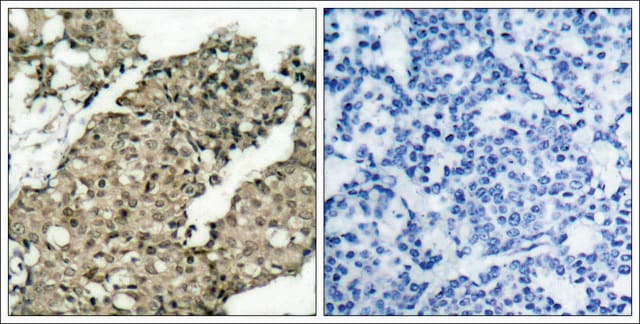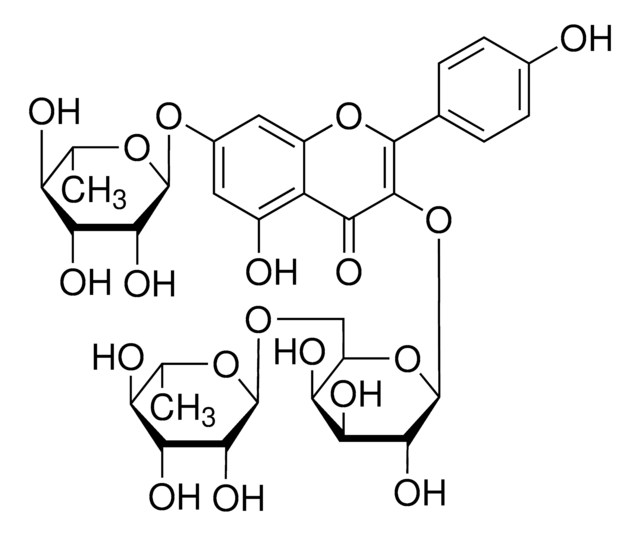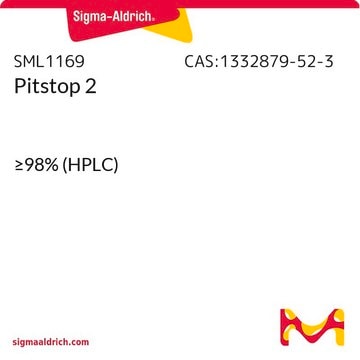345834
Genistein, Soybean
A cell-permeable, reversible, substrate competitive inhibitor of protein tyrosine kinases, including autophosphorylation of epidermal growth factor receptor kinase (IC₅₀ = 2.6 µM).
Synonym(s):
Genistein, Soybean, 4ʹ,5,7-Trihydroxyisoflavone
About This Item
Recommended Products
Quality Level
Assay
≥95% (HPLC)
form
solid
manufacturer/tradename
Calbiochem®
storage condition
OK to freeze
protect from light
color
white
solubility
DMSO: 200 mg/mL
shipped in
ambient
storage temp.
−20°C
InChI
1S/C15H10O5/c16-9-3-1-8(2-4-9)11-7-20-13-6-10(17)5-12(18)14(13)15(11)19/h1-7,16-18H
InChI key
TZBJGXHYKVUXJN-UHFFFAOYSA-N
General description
Biochem/physiol Actions
EGFR kinase
Warning
Other Notes
Wei, H., et al. 1995. Proc. Soc. Exp. Biol. Med. 208, 124.
Wei, H., et al. 1995. Carcinogenesis17, 73.
Kobayashi, S., et al. 1994. J. Biol. Chem.269, 9011.
Migita, K., et al. 1994. J. Immunol.153, 3457.
Spinozzi, F., et al. 1994. Leuk. Res.18, 431.
Dhar, A., et al. 1990. Mol. Pharmacol.37, 519.
Hill, T.D., et al. 1990. Science248, 1660.
Dean, N.M., et al. 1989. Biochem. Biophys. Res. Commun.165, 795.
Akiyama, T., et al. 1987. J. Biol. Chem.262, 5592.
Legal Information
Signal Word
Warning
Hazard Statements
Precautionary Statements
Hazard Classifications
Acute Tox. 4 Oral
Storage Class Code
11 - Combustible Solids
WGK
WGK 3
Flash Point(F)
Not applicable
Flash Point(C)
Not applicable
Certificates of Analysis (COA)
Search for Certificates of Analysis (COA) by entering the products Lot/Batch Number. Lot and Batch Numbers can be found on a product’s label following the words ‘Lot’ or ‘Batch’.
Already Own This Product?
Find documentation for the products that you have recently purchased in the Document Library.
Customers Also Viewed
Our team of scientists has experience in all areas of research including Life Science, Material Science, Chemical Synthesis, Chromatography, Analytical and many others.
Contact Technical Service










